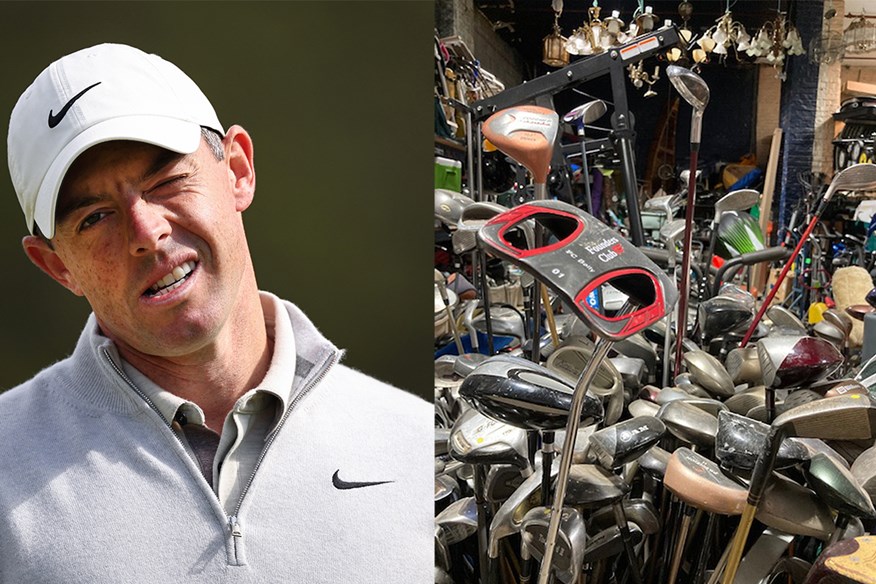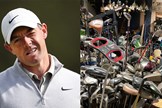What golf clubs do I need in my bag? How to build the ideal set for your game
Last updated:
Today’s Golfer answers the key questions you may be pondering when deciding which shapes and sizes of metal warrant a place in your bag.
Firstly, there’s no such thing as a silly question when it comes to choosing golf clubs. There are lots of silly answers (which I’ll try to avoid), but given there are infinite different ways to achieve the same number on the scorecard, no answers are particularly obvious.
Whether you’re contemplating taking up golf, have just begun a never-ending pursuit of satisfaction on the fairways, or have been riding golf’s rollercoaster of emotions for many years, considering the exact combination of golf clubs you need is an exercise worth doing thoroughly to ensure you have the best tools for your game. I’m 20 years into my journey and it’s only recently that I’ve started to scrutinize exactly ‘what’s in the bag’.
In this article, we run through the bag from top to bottom to cover the key considerations when conducting an audit of your current or future setup.
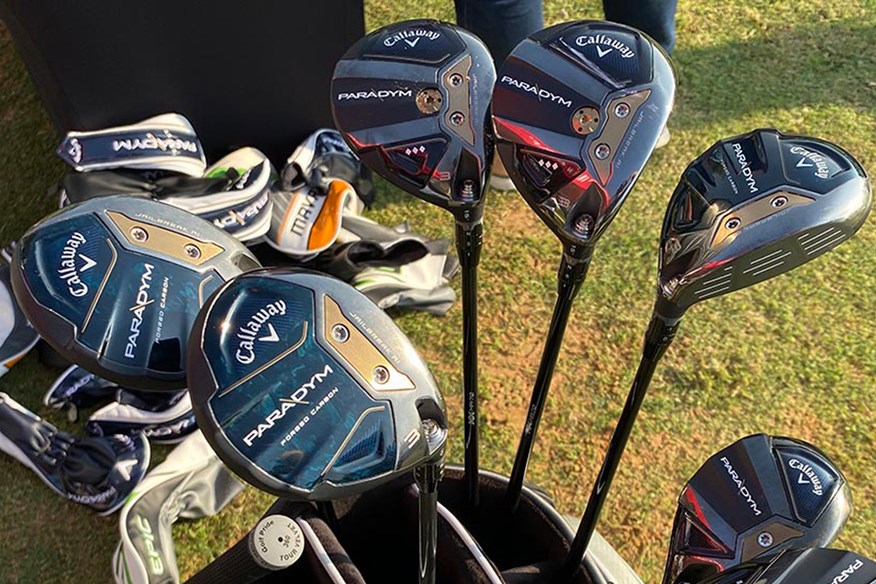
1. The Basics – Only 14 make the cut
The R&A and USGA adopted the 14-club limit in 1936, with the rule coming into effect in 1938. It’s been that way ever since, and bizarrely, no one knows why. A traditional set at the time was commonly made of four woods, nine irons, and a putter, hence why 14 probably seemed like a sensible number to stick with. There are no rules stipulating how many of each club type you can carry, however. If you wanted to put two drivers and three putters in the bag then you absolutely could, although you may find yourself with a few distance gaps.
And don’t feel the need to fill all 14 spaces too. Unless you’re playing competition golf and want to ensure you have maximum shot options, carrying slightly fewer clubs will not only ease the burden on your back but will force you to be creative with the ones you do have, experimenting with half and three-quarter swings or bump and runs around the green with a hybrid for example.
What happens if I have more than 14 clubs in my bag?
In practice, you’re more than welcome to play with more than 14 clubs in your bag, but in competition, the breach of Rule 4.1b comes with a penalty, even though the mistake is likely to be completely unintentional. It’s happened several times in professional golf, usually when a player has been testing some new clubs on the range and forgotten to remove the extra stick or sticks before they tee off in the tournament. Ian Woosnam famously fell victim to the rule when it was discovered he had been carrying two drivers in his bag. He was tied for the lead in the 2001 Open Championship at the time and the two-shot penalty that followed effectively ended his hopes of becoming a two-time Major champion.
Read in detail the penalty that applies in competition for breaching the 14-club rule.
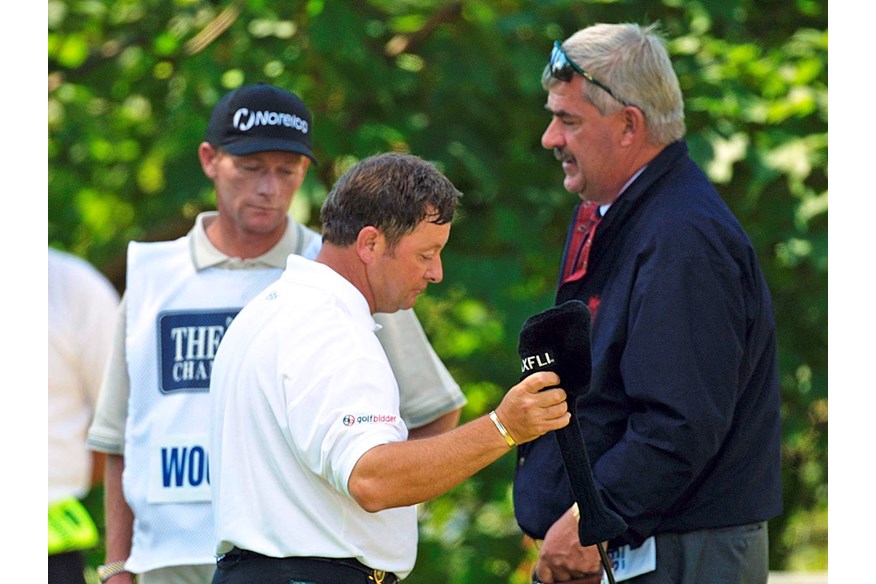
2. Start at the ends
Perhaps the only two clubs that you can’t get away without are the driver and putter. Having dependable bookends in your bag is essential, regardless of ability level as these are the workhorses of the bag, knocking courses down to size and getting that ball in the damm hole!
Selecting the best driver for your swing is crucial, so taking time before rushing to the checkout to consider your exact requirements from a big stick is a must. What balance of distance versus forgiveness do you need and do you need help correcting a slice? These are the types of questions worth asking. A similar approach needs to be taken with choosing the best putter for your game. Today’s Golfer tested 67 different models of blade, mallet, and high MOI putters in 2024 to help steer you toward making the most informed choice possible.
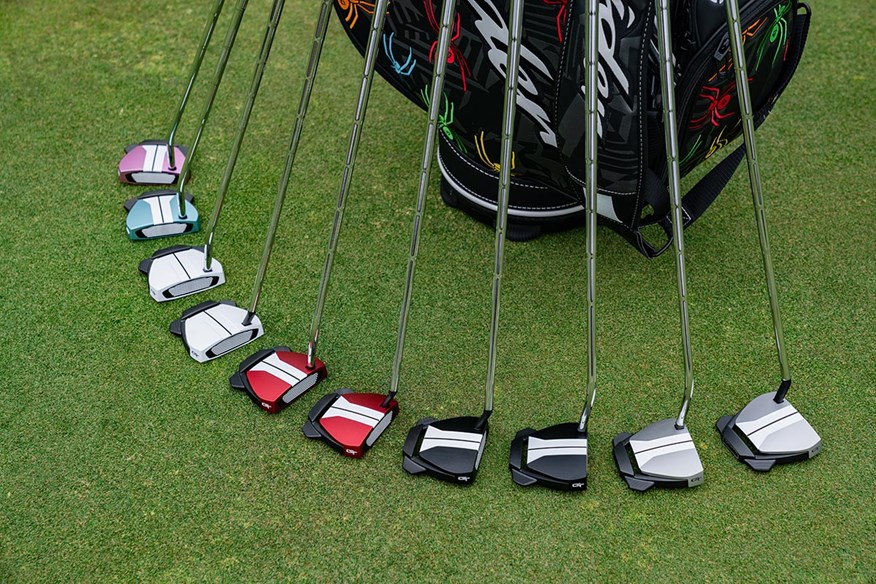
3. Think about your scoring clubs
The majority of shots you hit across a round are likely to be on and around the green. Being proficient in this area is paramount to being able to lower your handicap and shoot lower scores. Putters aside, the reality for many club golfers is that their wedge setup is often an afterthought, perhaps throwing in a lob wedge to make up the numbers. Choosing the best golf wedges for your game is a little more nuanced, however.
With most iron sets running as standard from 4-iron to pitching wedge, the question to ask is do you want more higher lofted options in your bag, or would you prefer to leave more room to cover potential gaps in your long game? Most golfers will carry between two and four wedges, adding a gap, sand, or lob wedge as they see appropriate for the variety of chips, pitches, and bunker shots they are likely to play. A sensible compromise, which I employ myself, is to opt for a three-wedge setup that bridges the gap between your 9-iron and your highest lofted wedge. My setup includes a 45° pitching wedge, 52° gap wedge, and 58° lob wedge, which I feel gives me enough options for my distinctly average skill set and leaves me plenty of flexibility higher up the bag.
Just to complicate matters further, wedges come in various bounces, sole grinds, and finishes that aim to complement the club’s interaction with the turf. If you play regularly on a course with consistent ground conditions such as a hard, dry, links course for example, taking a bit more time to consider different wedge characteristics will be worthwhile.
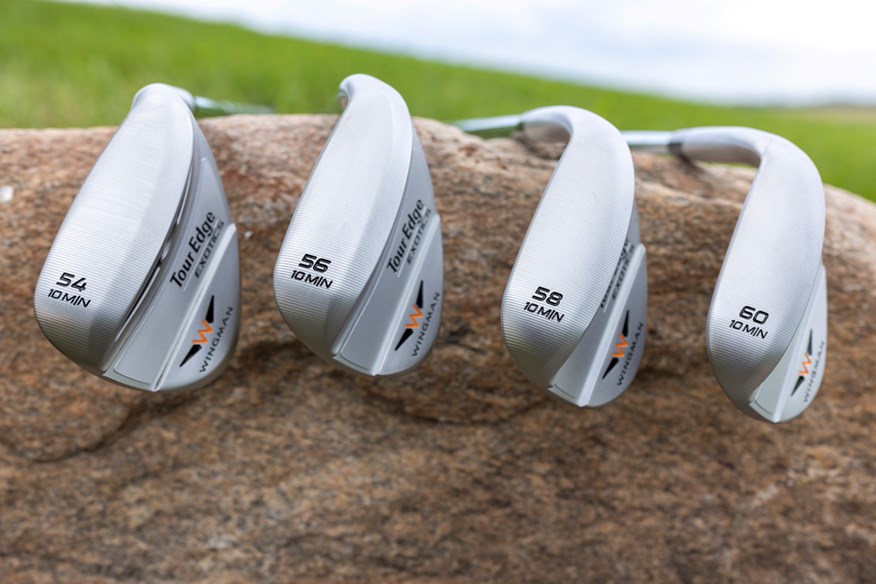
4. Be selective with your irons
By this point in the build, you’ll have likely filled 5-6 slots with a driver, putter, and some wedges. It’s time to pad out the bag with a combination of irons that backfill distance gaps from your first wedge, up to the longest iron you feel comfortable hitting, which for many club golfers will be a 4 or 5-iron. Once again, choosing the best irons for your game will be highly dependent on your specific needs and ability level. Try to avoid being too stubborn when it comes to brand loyalty (unless you’re good enough to be sponsored), and hit a range of irons from the category that best fits your requirements, be it the most forgiving irons on the market or ones designed for high-level players such as blade irons.
Do I need a full set of irons?
Absolutely not. The key to ensuring your golf bag setup is optimized for your game at the top end comes down to choosing between long irons, hybrids, and fairway woods – or the best combination of them.
Long gone are the days of persevering with a 3-iron in a particular model just because it matches your trusty 8-iron. Even the pros use slightly different models of longer iron to the bulk of their iron set and many manufacturers design their family of irons to be mixed and matched. For slower swinging players who struggle with longer irons, the technology incorporated into the latest hybrid clubs helps promote an easier launch, and thanks to a head shape that allows the CG to be positioned lower and further back than an iron, increases forgiveness too. Many brands now produce hybrids right up to a 7-iron alternative.
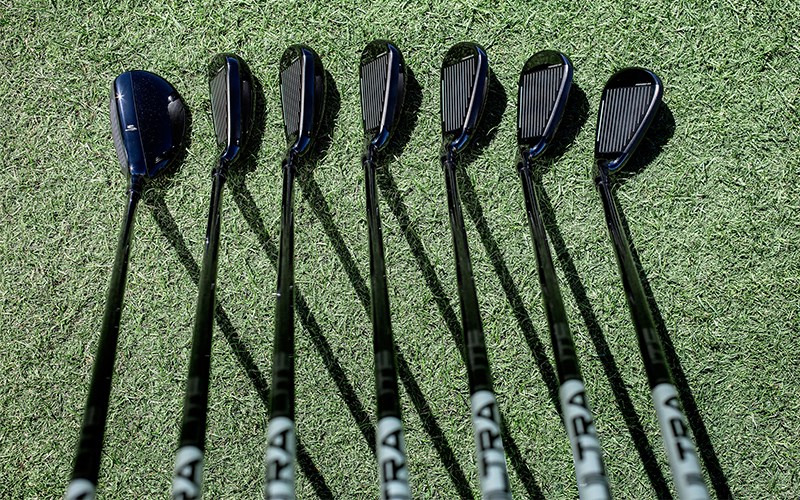
So, it’s time to get your thinking hat on again. If you’re a skilled golfer with plenty of speed and want a more piercing trajectory, long irons are your best bet. But if you want a nice middle ground between irons and fairway woods, hybrids offer a lot of pros with very few drawbacks. As a mid-handicapper, this is my preferred setup. I opt to carry irons from 5-PW and game a hybrid with 24° of loft that bridges the gap between my 5-iron and 5-wood, helping me to launch more consistently from the fairway and out of the rough.
Read our full guide to how to choose the best combination of irons, hybrids, and fairway woods for your game.
5. Fine-tune the gaps
By this point, I calculate you should have roughly 2-3 spaces available (if you choose to fully load). The obvious gap will be between your driver and longest iron or hybrid club. This is where the best fairway woods come into their own. In a ‘standard’ setup, a 15° 3-wood and ~19° 5-wood typically do the job for most, even though hitting consistently well off the deck can be a challenge for high-handicap players. That said, the technology in the latest fairway wood releases is helping club golfers to get the ball airborne more easily than ever before, knocking down the yards and helping them reach par-5s in two. The TaylorMade Qi10 Max and Callaway Paradym Ai-Smoke Max are two great examples to consider.
Another consideration when fine-tuning your bag should be for the typical course conditions you encounter. It’s all very well having high-launching woods if you play on in-land courses, protected from the wind with tree-lined fairways. But what about when it’s blowing a hooley on an exposed links course and you need to hit low, penetrating ball flights? If this is the case, perhaps replacing your 5-wood with one of the best driving iron alternatives is a good shout. I have both options in my bag as I have space to, but if you don’t, you can always research the course and weather before deciding which option makes the cut.

Why are so many players adding a 7-wood to their bag?
Today, over a quarter of tour pros game a 7-wood including Matt Fitzpatrick, Viktor Hovland, and Max Homa just to name a few. Their surge in popularity is due to their ability to launch shots higher and with more spin than a hybrid equivalent. Their larger head size compared to a hybrid also means that MOI (stability) is higher, meaning they offer more forgiveness. Therefore adding one of the best 7-woods to your setup in place may prove very beneficial, particularly if you like the ability to approach from distance with maximum stopping power.
6. Do your due diligence
Ordering blindly from a manufacturer or retailer without having at least a few practice swings is a dangerous game, even if you’ve done your research. Ideally, you will have hit a few different models of driver or iron on a range or golf simulator before settling on the model you want to lock in. At this point, we highly recommend a custom-fitting session to ensure your clubs are working for you and not against you. After all, you are making a significant investment with every club you purchase so getting the most bang for your buck is important in our book.
Contrary to popular belief, custom fitting sessions are not reserved for the game’s elite, and as Today’s Golfer Golf Equipment Writer James Hogg who spent seven years as a custom fitter for American Golf says: “Custom fitting is for everyone, there’s a myth that if you’re not very good you don’t need a custom fitting – absolute nonsense.
Research suggests that at least 75% of golfers are playing with the wrong clubs, wrong shafts, or both. There’s also data showing that 87% of golfers who get custom-fitted lower their handicap by at least 10%. The four main ways to organize a custom fitting session are through your club pro, in-store at a big retailer, via a specialist fitter, or by visiting a manufacturer’s fitting center.
Read everything you need to know about golf custom fitting in our complete guide.
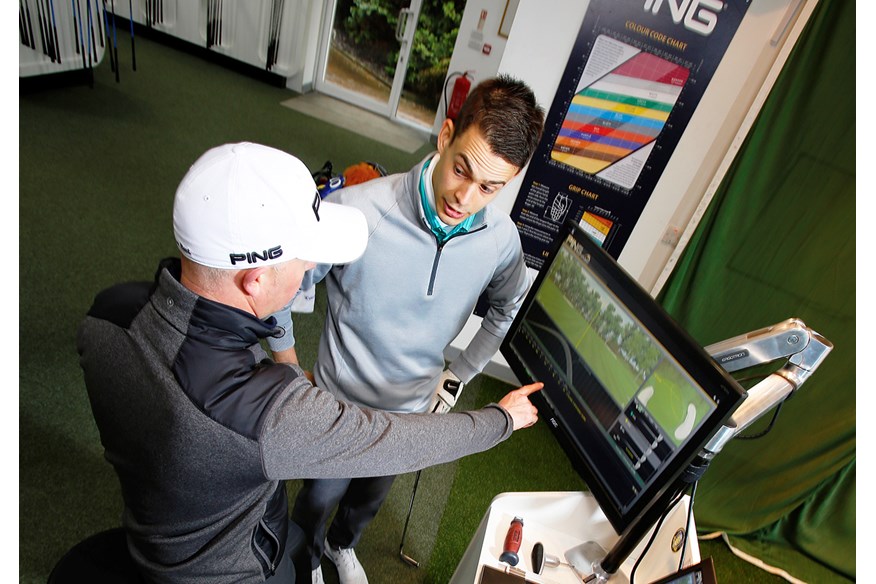
7. Be your own player
Our final pointer when deciding what clubs you need in your bag is to ‘do you’. It’s easy to be influenced by playing partners, tour pros, and powerhouse brands, but ultimately the only thing that matters is the number on your scorecard at the end of your round (and how much you enjoyed it). No two golfer’s optimal setup will be the same and therefore you should game the clubs that make you feel confident as this will likely be reflected in your scoring. Phil Mickelson famously won the 2006 Masters with two drivers in the bag, one to draw and one to fade. He did it his way, and so should you!
Unsure when to replace equipment? Read our full guide to when to upgrade your golf clubs.
8. Oh, balls
It takes two to tango, and for every shaft, there’s a ball at the end of it which deserves some love too. Today’s Golfer conducts an industry-leading Robot Golf Balls Test each year to help our readers identify the best model to suit their game. So whether you’re an elite-level player, mid-handicapper, slow-swinging senior, or complete beginner, you can marry up your game with the best golf ball for those requirements.
Using a less optimal ball for your game is unlikely to cause your handicap to start climbing, but it may help protect your weaknesses or accentuate your strengths. Also, as proved by our Robot Test, premium-priced balls are not guaranteed to outperform more competitively priced options. I prefer to prioritize control around the greens as my short game is something to behold at times! So balls with high spin rates and stopping power such as the PXG Xtreme or Callaway Chrome Tour X are go-to options for me.
Check out our best golf accessories page for more inspiration on essentials for your bag!
SUBSCRIBE TO TODAY’S GOLFER: Print and Digital access, discounts and rewards!
